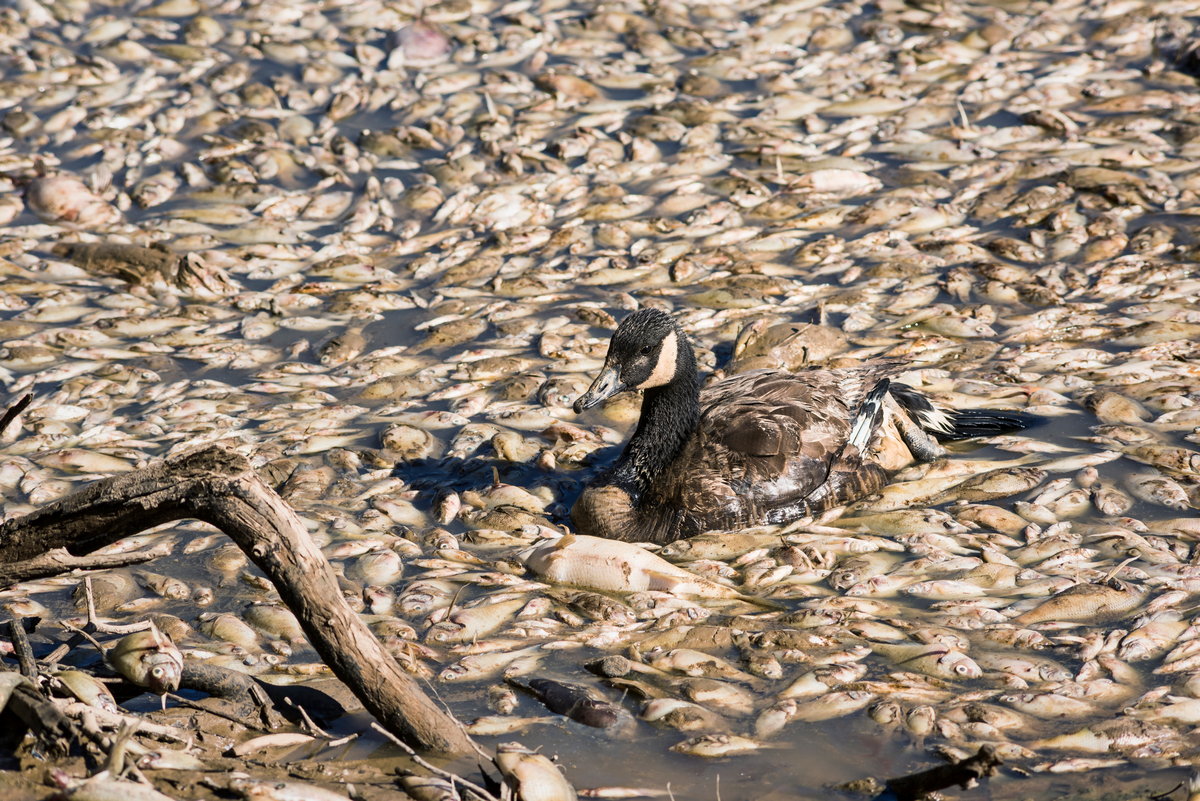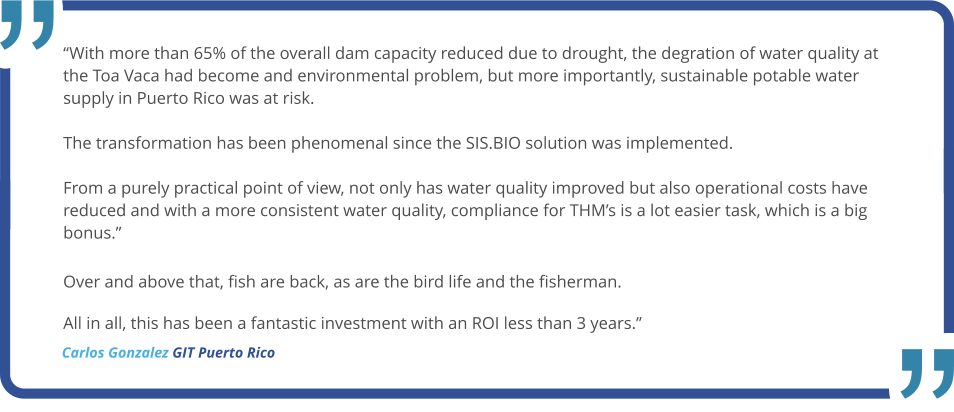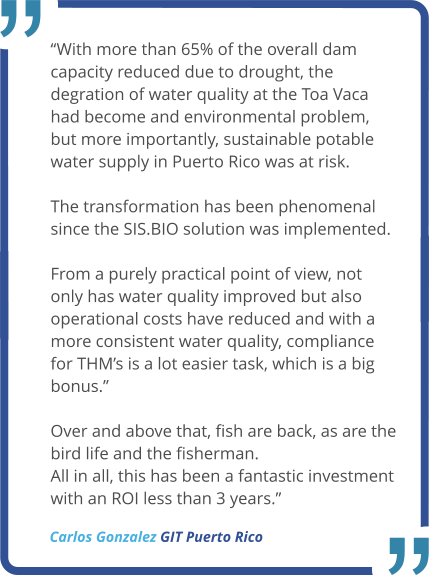FISH KILLS
HOW DOES EUTROPHICATION CAUSE FISH KILLS?
Eutrophication is a major contributor to fish kills in water bodies. As eutrophication progresses, several factors combine to create conditions that are lethal to fish:
1. Hypoxia: The accumulation of nutrient-rich sediment and the decomposition of excess algae lead to oxygen depletion in the water column, particularly in the deeper layers. Fish require adequate dissolved oxygen levels to survive, and when hypoxia becomes widespread, fish kills can occur.
2. Lake Turnover: In stratified lakes, the bottom layer (hypolimnion) can become anoxic and accumulate toxic gases such as ammonia and hydrogen sulfide. During seasonal turnover events or strong mixing events, these toxic gases can be released into the upper layers of the water column, poisoning fish and other aquatic life.
3. Cyanobacteria HABs: Eutrophication favors the growth of cyanobacteria, which can form harmful algal blooms (HABs). Some cyanobacteria species produce potent toxins that can cause rapid fish kills when released into the water. As eutrophication continues to degrade water quality and alter the aquatic ecosystem, fish populations become increasingly stressed and susceptible to mass mortality events.

ARE FISH KILLS A PROBLEM, AND ARE THEY IMPORTANT?
Fish kills are a significant problem in eutrophic water bodies because they indicate a severe imbalance in the aquatic ecosystem. Fish serve as important indicators of overall water quality and ecosystem health, and their mass mortality is a clear sign that the water body is in distress.
Fish kills can have far-reaching ecological, economic, and social consequences:
1. Ecological Impact: Fish kills disrupt the balance of the aquatic food web, affecting other organisms that depend on fish for food or other ecological roles. The loss of fish diversity and abundance can have cascading effects throughout the ecosystem.
2. Economic Loss: Fish kills can result in significant economic losses for communities that rely on recreational fishing, commercial fishing, or tourism. The negative publicity associated with fish kills can deter visitors and damage local businesses.
3. Social Impact: Fish kills can cause emotional distress for people who value the aesthetic and recreational qualities of water bodies. The sight and smell of dead fish can be disturbing and may lead to reduced enjoyment of aquatic environments. Addressing the underlying causes of fish kills is crucial to maintain the ecological integrity of water bodies, protect economic interests, and preserve the social benefits of healthy aquatic ecosystems.
WHAT IS THE WRONG WAY TO GO ABOUT TRYING TO FIX THE PROBLEM?
A misguided approach to preventing fish kills is to focus solely on removing dead fish from the water without addressing the underlying causes of eutrophication. While removing dead fish is necessary for aesthetic and public health reasons, it does not solve the problem in the long term.
Another ineffective strategy is to restock the water body with fish without improving water quality. This approach may provide temporary relief, but the newly introduced fish will likely face the same fate as their predecessors if the conditions that led to the fish kill are not addressed.
Attempting to control eutrophication by using chemical treatments such as algaecides or phosphorus precipitants can also backfire. These chemicals may provide short-term relief but can exacerbate the problem by contributing to nutrient accumulation in the sediment and disrupting the aquatic ecosystem.
HOW DO YOU FIX THE PROBLEM?
At Clean-Flo we take a comprehensive approach to prevent fish kills by addressing the root causes of eutrophication.
By oxygenating the water column and sediment, we prevent the development of hypoxic conditions that are lethal to fish. Adequate dissolved oxygen levels also prevent the formation of toxic gases such as ammonia and hydrogen sulfide, reducing the risk of poisoning during lake turnover events.
Our bioaugmentation involves the introduction of enzymes to digest the accumulated nutrient-rich sediment away and micronutrients to support beneficial algae that can outcompete cyanobacteria and stimulate the productivity of the food web, reducing the likelihood of toxic HABs.
By creating conditions that favor a healthy, diverse aquatic ecosystem, our approach helps to prevent fish kills and maintain the ecological, economic, and social value of water bodies.


Download the Lake Management ACTION Plan E-Book
Ready to explore how oxygenation can transform your lake? Download Clean-Flo’s Lake Management ACTION Plan E-Book to learn more about our innovative solutions, real-world results, and how we can help restore and protect your lake.
